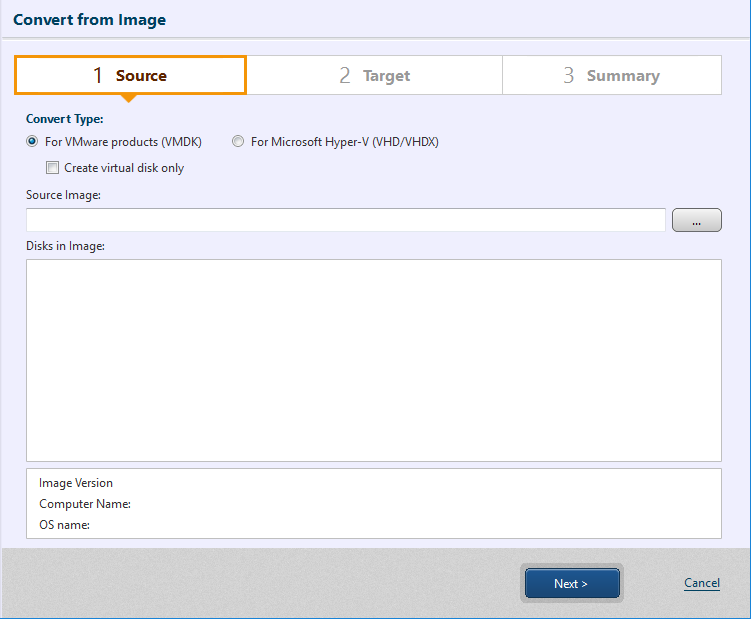
Select [Convert Type] and a source image.

Select [Convert Type]. To create a virtual disk instead of a virtual machine, please enable [Create virtual disk only] option.
* Hyper-V Enterprise Edition does not support virtual conversion for VMware products.

Select a source image and disks in the image.
* The agentless backup images created by using HyperBack are not supported.
* Virtual conversion of Linux systems is not supported.
* Backup image file of a Windows OS created in CentOS-based boot environment is supported however, the virtual machine and virtual hard disk created as a result does not include installation of the drivers.

* Select only one image file. Conversion to virtual machines or disks from multiple images is currently not supported.
After configuration of the settings is complete, click on [Next >].
Specify the destination. Available destinations and the settings should differ depending on the conversion type selected above.
· Convert to virtual machine for VMware Products
· Convert to virtual machine for Microsoft Hyper-V environment
· Convert to virtual disk for VMware products
· Convert to virtual disk in Microsoft Hyper-V environment
Select a datastore from the vCenter Server for VMware vSphere or ESXi hypervisor as the conversion target. Version 5.0 or later is supported as the target.
Specify the target host and click on [Connect]. When the connection is successfully established, the following information is displayed in the window.
* Conversion of a 32-bit OS to ESXi 6.5 or later host is not supported.
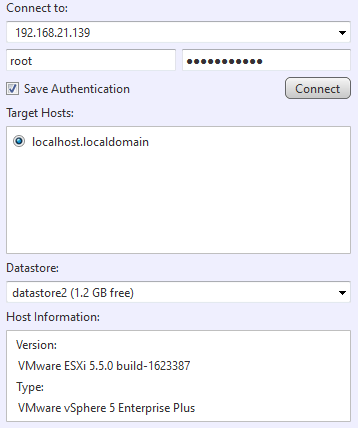
If selecting the datastore for the target, please configure the settings for the virtual machine.
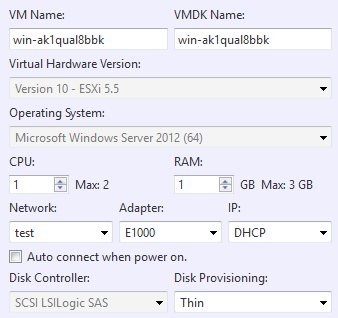
|
Item |
Description |
|
VM Name |
The default name can be changed. * Double-byte characters cannot be used to specify the name. |
|
VMDK Name |
The default name can be changed. * Double-byte characters cannot be used to specify the name. |
|
Virtual Hardware Version |
To be determined depending on the version of the target host. |
|
Operating System |
To be determined depending on the operating system information of the source image. * The SCSI controller type of the virtual machine is determined depending on the OS. |
|
CPU |
Up to the number of CPUs on the target host can be specified. |
|
RAM |
Up to the RAM size on the target host can be specified. |
|
Network |
Select a network option available on the destination host. * Network names with double-byte characters are not indicated. |
|
Adapter |
Only VMXNET3 can be specified. |
|
IP |
Only DHCP can be selected. |
|
Auto connect when power on. |
With this option enabled, the virtual machine, when booting up after the conversion is network connected. |
|
Disk Provisioning |
Thin or Thick provisioning (Lazy Zeroed) can be selected. |
Post Task Execution Processing ([Reboot] or [Shutdown] can be selected).

Convert to a virtual machine on Microsoft Hyper-V host. Version 2008 R2 or later is supported as the conversion target.
* Ensure Microsoft .NET Framework 4 or later is configured on the conversion source host.
* Ensure that Administrative share is enabled on the managed remote computer.
After specifying the connection target, click [Connect]. When the connection is successfully established, the following information is displayed.
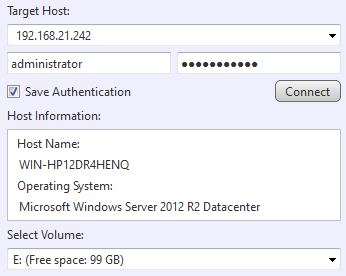
Select the volume and folder and configure the settings for the virtual machine.
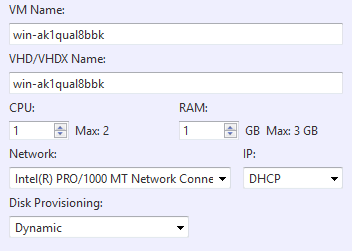
|
Item |
Description |
|
VM Name |
The default name can be changed. * Double-byte characters cannot be used to specify the name. |
|
VHD/VHDX Name |
The default name can be changed. * Double-byte characters cannot be used to specify the name. |
|
CPU |
Up to the number of CPUs on the target host can be specified. |
|
RAM |
Up to the RAM size on the target host can be specified. |
|
Network |
Select a network option available on the target host. |
|
IP |
Only DHCP can be selected. |
|
Disk Provisioning |
Select Dynamic or Static. |
Post Task Execution Processing ([Reboot] or [Shutdown] can be selected.

Define by clicking the radio button to create the virtual machine file to a [Local/Network Share Folder] or to vCenter Server of the VMware vSphere or [Datastore on ESXi hypervisor]. Only Version 5.0 or later are supported as conversion targets. If a datastore is specified as a conversion target, specify the connection target host and click [Connect]. When the connection is successfully established, the following information is displayed.
* Conversion from 32-bit OS to ESXi 6.5 or later host is not supported.
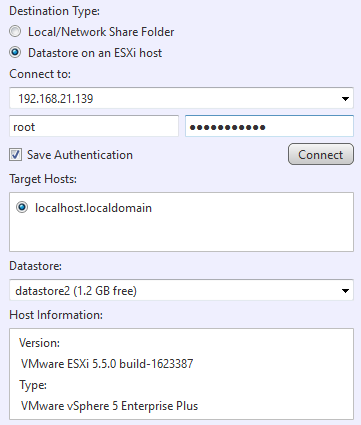
After specifying the target host, please configure the settings for the virtual disk.
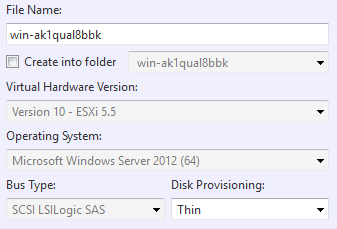
|
Item |
Description |
|
File Name |
The default name can be changed. * Double-byte characters cannot be used to specify the name. |
|
Create into folder |
The file is created in the folder in datastore. The option is provided to newly create the folder. * Double-byte characters cannot be used to specify the name. |
|
Virtual Hardware Version |
To be determined depending on the version of the target host. |
|
OS |
To be determined depending on the operating system information of the source image. |
|
Disk Provisioning |
Thin or Thick Provisioning (Lazy Zeroed) can be selected. |
To create the virtual disk on a local or network share folder, please specify the conversion target and configure the settings for the virtual disk.
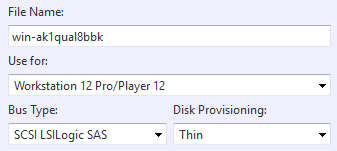
|
Item |
Description |
|
File Name |
The default name can be changed. * Double-byte characters cannot be used to specify the name. |
|
Use for |
Select the virtual environment to use the created virtual disk. |
|
Disk Provisioning |
Thin or Thick Provisioning can be selected. * If you select ESXi, Thick Provisioning is selected. |
Post Task Execution Processing ([Reboot] or [Shutdown] can be selected).

Specify local or network share folder to create a virtual disk.
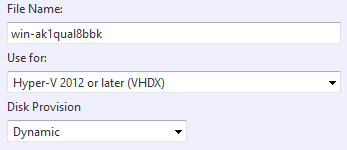
After specifying the conversion target, please configure the settings for the virtual disk.
|
Item |
Description |
|
File Name |
The default name can be changed. * Double-byte characters cannot be used to specify the name. |
|
Use for |
Select the virtual environment to use the created virtual disk. |
|
Disk Provision |
Select Dynamic or Static. |
Post Task Execution Processing [Reboot] or [Shutdown] can be selected.

Upon completion of configuring the settings, click on [Next >].
Please review the settings for virtual conversion.
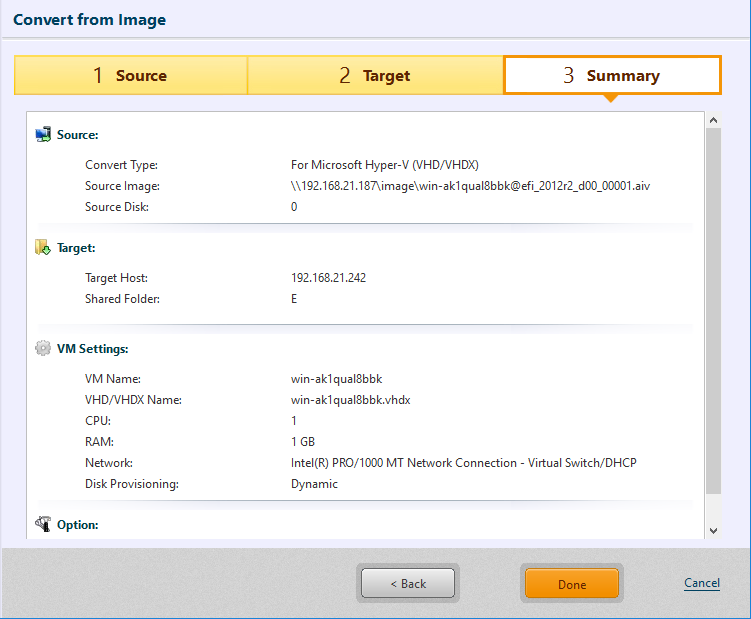
Click [Done] to proceed with the conversion.
If you selected Thick Provisioning for Disk Provisioning (Disk Type) or Static, it takes more time before starting the task as the virtual disk is created as the same size as the conversion source disk.
* After conversion to CSVFS volumes, please visit here for the detailed procedures required on the conversion target cluster node.